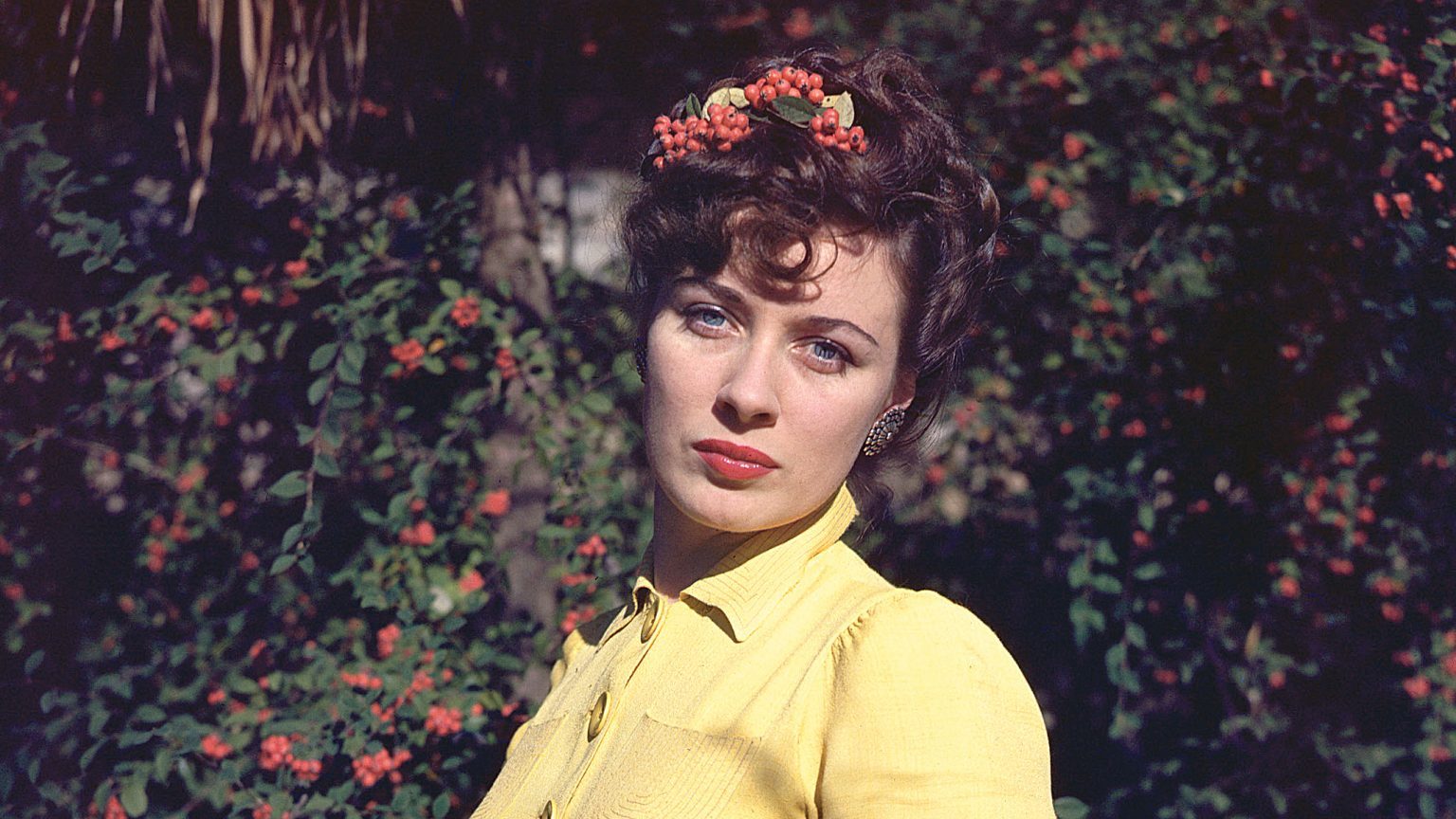When Viveca Lindfors arrived in Hollywood towards the end of 1946 to be greeted personally by Warner Bros’ studio head Jack L Warner, anything seemed possible.
Greta Garbo had pioneered a route from Sweden to Los Angeles and Ingrid Bergman had followed. Both had met with immense success but also, as far as Lindfors was concerned, her compatriots had been able to stretch themselves creatively without compromising either personal or professional integrity.
As Warner escorted her on a tour of her new workplace, Lindfors felt on the threshold of something extraordinary. It was not the glamour that fed her excitement. It was not even the lucrative contract she had signed with the studio either, although of course that was very welcome.
What thrilled her most was the sense of opportunity her transatlantic move inspired; the prospect of working with the world’s greatest directors and most famous screen actors, of stretching herself as a performer to the heights she knew were attainable.
Warner led her around the lot, outlining the plans the studio had for her, the starring roles she would enjoy and the creative freedom she would exploit, introducing her to Gary Cooper, Bette Davis and Joan Crawford, who all greeted her warmly as an equal.
When Warner disappeared immediately after the photographers had departed, however, most of his expansive promises vanished with him.
While Lindfors threw herself immediately into work – “Viveca studies scripts as if they were Einstein’s theories,” said producer Jerry Wald – she soon realised that not only did Warners have no specific plans for her, they had absolutely no idea what to do with her.
To them she was just an accent to be thrown at any film requiring a token European: a Frenchwoman in To the Victor, the Queen of Spain in Adventures of Don Juan and an Austrian cabaret artiste in Backfire.
The one role that came closest to suiting her was opposite Ronald Reagan in Night Unto Night but even then, despite it being the first film she made on arriving in Hollywood, Night Unto Night was not released until the summer of 1949.
And by then, Lindfors and Warner Bros had parted ways.
In February of that year, Lindfors appeared on the cover of Life magazine gazing wistfully upwards in a melancholic portrait in profile. Inside she told the interviewer exactly how unhappy she was in Hollywood, making it plain she didn’t care whether Warners renewed their option on her contract or not.
Almost as soon as the magazine hit the newsstands – and Jack Warner’s desk – the studio informed her they were not.
While she continued making films for the rest of her life, Lindfors’ Hollywood experience had a profound effect on everything that followed. Having always vowed to be entirely herself, on and off screen, the Hollywood experience prompted a lifelong questioning of what being herself actually meant, from her career to her place in the world as a woman. Which inspired some utterly compelling dramatic performances.
Lindfors found her true calling on the stage, becoming a stalwart of Broadway. Theatre had been her first love in Sweden, where she had graduated from the prestigious Royal Dramatic Theatre school in Stockholm before moving into cinema, initially just to make enough money to pursue theatrical projects that barely paid.
She turned out to be a natural on screen and when she starred in the 1944 Swedish hit Apassionata, Hollywood came calling.
Her Broadway performance as the eponymous lead in Guy Bolton’s 1955 play Anastasia, based on the true story of a woman who claimed to be the Russian princess murdered by the Bolsheviks along with her family in 1917, earned Lindfors extraordinary reviews.
“A piece of acting that came out of theatre’s treasure chest,” said the New York Times’s legendary critic Brooks Atkinson. “Miss Lindfors is all grace, softness and humility.”
The following year she appeared opposite Orson Welles in a staging of King Lear, by which time she had met Lee Strasberg, the doyen of method acting, whose Actor’s Studio changed Lindfors’ entire mindset and channelled her relentless self-analysis into the very core of her craft.
“There is much more in you to be used than Hollywood was ever aware of,” Strasberg said, willing her to look deep within for inspiration.
There was a certain amount of commuting between New York and Los Angeles for film work – in 1971 she played Portia in The Merchant of Venice, while on screen she was the murderous wife of a psychotic sculptor in Cauldron of Blood – but almost with each passing year Lindfors became more settled in herself.
Such introversion led to a series of extraordinary one-woman shows, most notably I Am a Woman, a play she devised herself about a woman’s need to be whole that she toured for almost 400 performances, and 1984’s Anna, a play based on the diary of a 19th-century Swedish woman, Anna Olesdotter-Wing, who had emigrated to the United States a century before Lindfors followed.
In her later years, even if she never truly found what she was looking for within herself, Lindfors at least settled into a healthy equilibrium. She refused to play the accepted role of the star; a later interviewer noted cattily that “her hair had not seen a brush that day”.
Her lack of interest in looking glamorous at all times was part of a personal philosophy affirmed in her 50s when she said: “Any qualms I might have had about advancing years were dispelled a long time ago when I decided not to be put down by America’s worship of youth”.
Even when she needed 28 stitches in a facial wound after a random razor attack in Greenwich Village one night in 1990, Lindfors remained philosophical. “If I could get into schools and read poetry to these kids,” she mused, “couldn’t they turn their passion and that turbulence into a strong life force to be used in a positive way?”
At its close her life had turned full circle. Touring her one-woman show In Search of Strindberg in Europe, Lindfors fell ill and died in, of all places, the Swedish town of Uppsala where she was born. She had not long finished filming Henry Jaglom’s Last Summer in the Hamptons, a film released posthumously in which Lindfors played an elderly actress asked by a younger contemporary why she had left Hollywood.
“I wanted to find the same high quality in my life that I feel on stage,” she said. “Maybe I’ll come back as an 18-year-old. “Or maybe,” she added, making an expansive gesture towards the sky, “maybe I’ll do it up there.”




